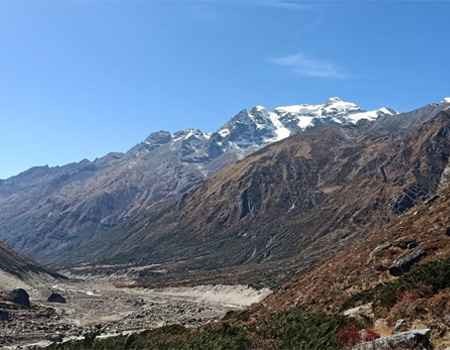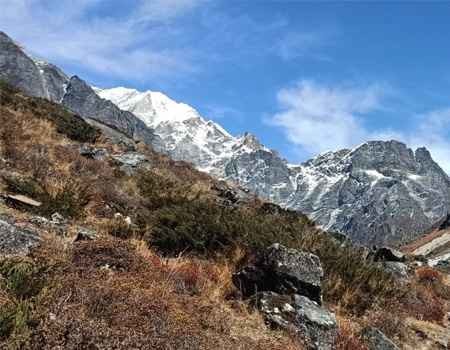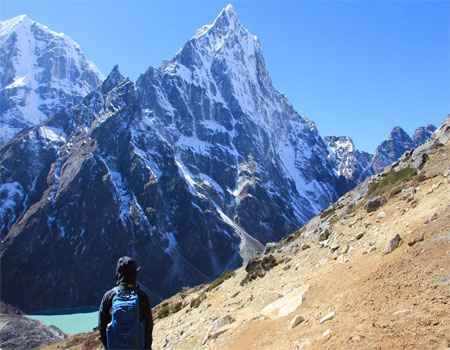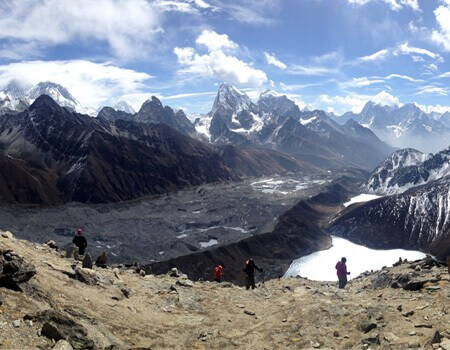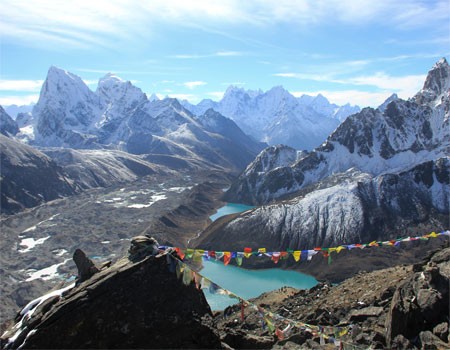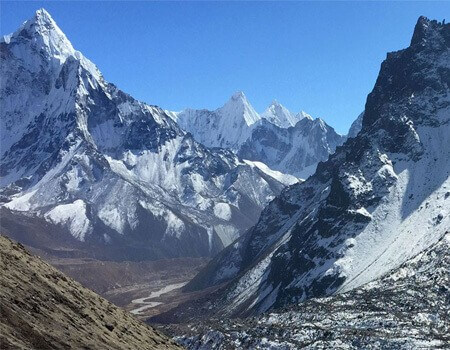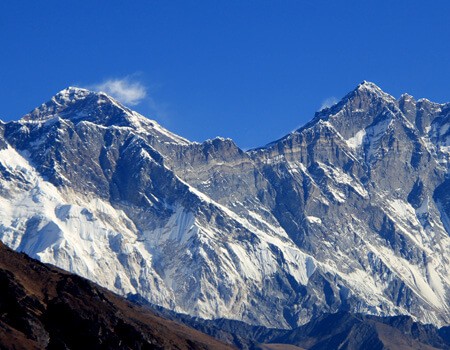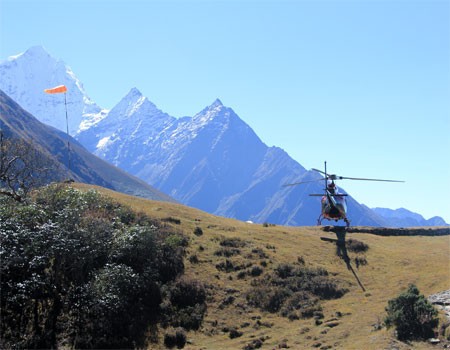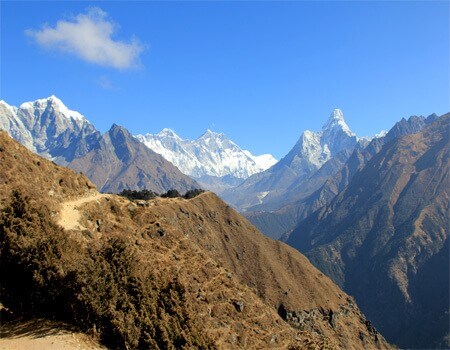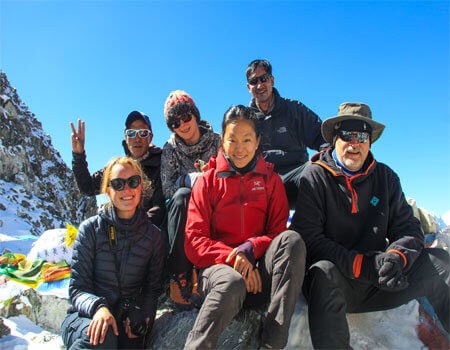Everest Region is not just a Trek destination but a significant breakthrough in one's life. With multiple glacier-fed lakes, deep settlements, and beautiful mountain ranges, the Everest Region Trek assures the trekkers of the best-ever adrenaline rush. You can't simply consider yourself a Trekking enthusiast until and unless you have admired the rough and beautiful terrains of the Everest Region. Throughout the Trek, you will be accompanied by significant mountains such as Cho Oyu (8188m), Lhotse (8414m), and Ama Dablam (6856m). However, Mt. Everest (8848m) remains the primary source of attraction. Anyone visiting Nepal is constrained by the glory of Mt. Everest (8848m). Along with its natural wonders, the Region also offers a great diversity of cultures and traditions. The local Sherpa people's unique hospitality and mythical practices will amaze the trekkers.
About The Everest Region Trek
Table of Contents
World Class Treks available in Everest Region
From professionals to novice trekkers, the Everest Region offers a significant variation in Trekking trails per your capability and requirement. Everest Base Camp Trek, Gokyo Lake Trek, Cho La Pass Trek, Everest View Trek, and Everest High Passes Trek are four of the most famous Treks in this Region. The Everest Region Treks are a perfect fit for beginners and regular trekkers. The trails are less hectic, and the views are simply breathtaking. The Treks are also available in different variations, and the trekkers can undertake either camping or teahouse Treks.
Sherpa people inhabited these trails and will majorly focus on cultural experiences. Throughout the trip, you will learn much about the Sherpa people and their lifestyles. Everest Base Camp Trek, Gokyo Lake Trek, Cho La Pass Trek, and Everest View Trek are comparatively more adventurous than those in other regions of Nepal. The treks will lead you into the heart of Sagarmatha National Park, a UNESCO World Heritage site. If lucky enough, you will encounter many exotic species like Snow Leopard, Blue Sheep, and Himalayan Thar in your Treks to the Everest Region.
Similarly, the Everest High Passes Trek is a perfect matchup for professional trekkers seeking to challenge themselves by stepping into the true snowy wilderness. The fantastic trip combines the classic Everest Base Camp Trek and the adventurous trails to Gokyo Lake. The journey also leads through the extreme passes of Kongma La (5535m), Cho La (5420m), and Renjo La (5360m) and finally back to Namche Bazaar.
Related:
Grading of the Everest Region Treks
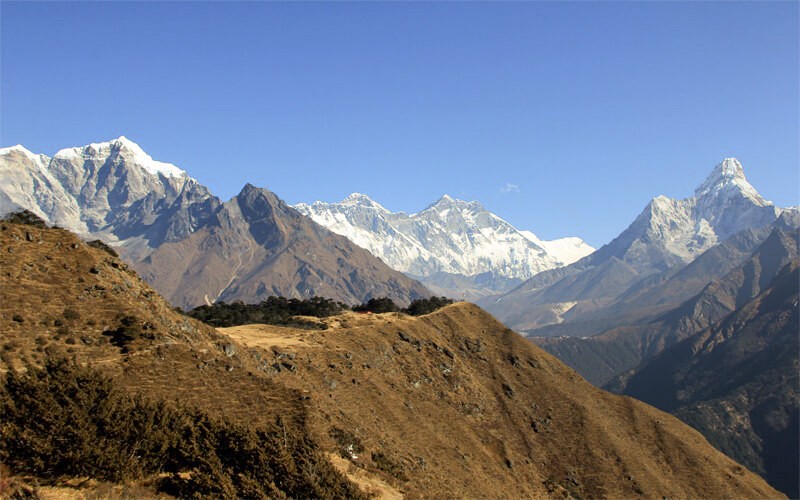
View from the Everest view hotel.
The treks in Everest Region are categorized into five grades according to their complexity and altitude variation.
The first-grade Trek is the easiest and requires no experience. The elevation varies up to 2500 meters from sea level.
The 2nd-grade Trek is moderate and slightly challenging. With an elevation from 2500 to 4000 meters, the tours here comprised walking uphill and downhill alongside the mountainous forest.
Similarly, the 3rd-grade Trek starts from 4000m and reaches up to 5550 meters. It is slightly strenuous and requires specific trekking experience and a decent level of physical fitness.
Above 5550 meters is considered a grade 4 Trek. The chance of AMS (Acute Mountain Sickness) is significantly high at this altitude. The rocky terrains and slippery glaciers also demand good physical conditioning and slight mountaineering skills.
Above 6100 meters, the Treks are classified as grade 5. They are highly challenging and carried out in frigid situations. The Trek requires special climbing skills, mountaineering knowledge, and high-functioning equipment.
Teahouse and Camping Trek in Everest Region
Furthermore, the treks here are classified into two major groups regarding accommodations: i.e., teahouse Trekking and camping Trekking. In tea house treks, the visitors stay comfortably at local hotels, guesthouses, and lodges available in the Region. They offer you proper accommodation facilities along with a specific food menu. Withal, trekkers are recommended to carry an additional sleeping bag. Similarly, Camping Treks are another significant way of spending nights in the Everest Region. Here you will be accompanied by professional guides, porters, and cooks. Carrying a 0-degree sleeping bag is a must for this type of Trek. Overall, it allows you to embrace the true beauty of the Everest Region. However, the camping Trek cost is higher than the cost of tea house Treks.
Related:
Key Facts of the Everest Region
- The Region hosts three of the world's highest peaks: Mt. Everest, at 8848 m (highest), Lhotse, at 8516m (fourth highest), and Cho Oyu, at 8201m (sixth highest).
- The Region is home to Sagarmatha National Park (1148 sq. km), which is home to many exotic and rare species of wild birds and animals.
- Everest is known as Sagarmatha in Nepali, Chomolungma in the Tibetan language, and Khumbu amongst the locals.
- Sherpa, Gurung, Tamang, and Thami mainly inhabit the Everest region. The Sherpa and Tamang people are famously known for their mountaineering abilities.
- Although most people living in the Everest region follow Buddhism as their primary religion, Hinduism and Shamanism are also seen to be practiced here.
Plan Your Trek:
- Everest Base Camp Trek Details
- Everest Base Camp Trek Gear List
- Everest Base Camp Trek Accommodation
- Altitude Sickness
Conclusion
Hence, the Everest Region is a nature souvenir for Trek lovers. The location offers you a wide range of opportunities. Trips here will allow you to enjoy the beautiful views of majestic mountain ranges and learn much about the indigenous people, their culture, and their traditional practices. Everest Region Trekking is your choice if you love challenging yourself to the utmost level. Book your Everest Base Camp Trek with us.
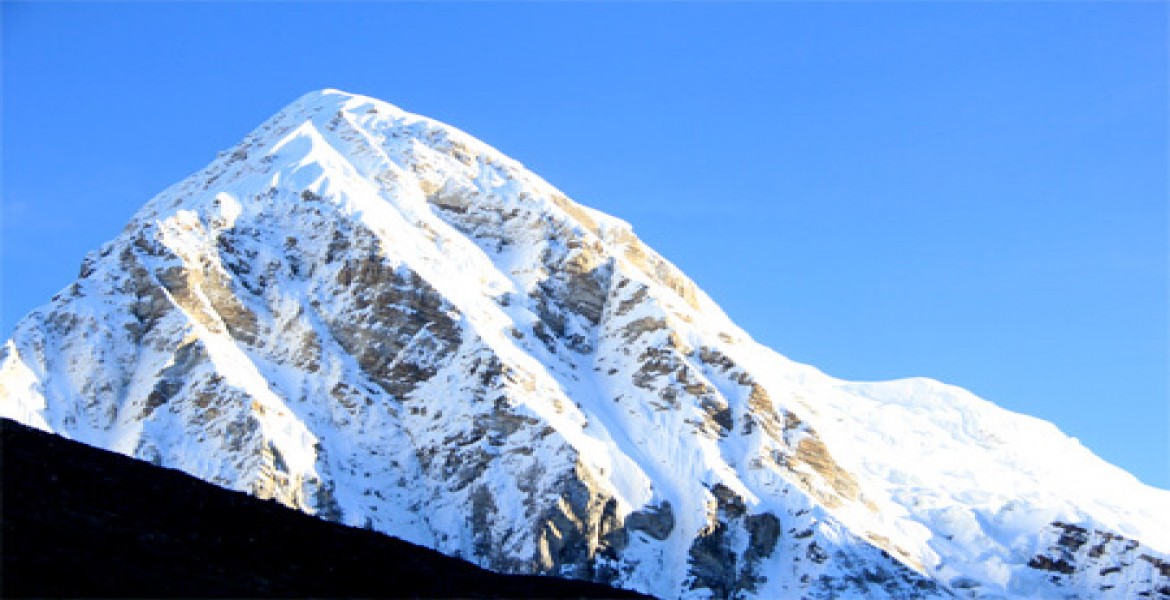
.jpg)


